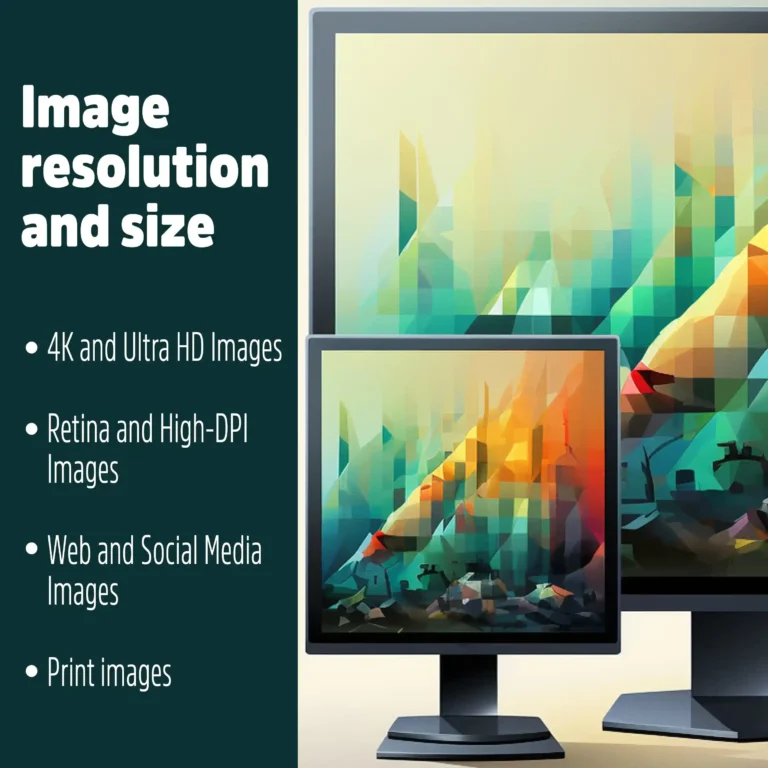An understanding of the difference between screen and print image sizes is essential. Screen images are for viewing on digital devices while printing images are those to be printed on paper or any other media. Image sizes for screen and print are described in detail below, along with their relation to monitor resolutions.
Screen Image Sizes:
Two paramount factors are taken into consideration for screen images, being pixel dimensions and resolution.
Pixel dimensions are the width and height of an image expressed in pixels.
Resolution is measured in pixels per inches or dots per inch (PPI or DPI).
Web and Social Media Images:
These images are usually viewed on screens and thus vary in size from small thumbnail images to being displayed full screen.
The common sizes are in pixels, including 640 x 480, 800 x 600, 1024 x 768, and 1920 x 1080.
A common standard resolution for web and social media images is 72 PPI.
Retina and High-DPI Images:
Retina means high-resolution display of Apple Company.
Size commonly known is 1440 x 900 or 2560 x 1440.
Minimum preferred resolution is 150 PPI.
4K and Ultra HD Images:
Designed for 4K monitors and TVs having a resolution of 3840 x 2160 pixels or above.
The preferred resolution for these images is 300 PPI and above.
Print Image Sizes:
In these images, consider resolution and file format for the sharp reproduction and in conformity.
Some common sizes and resolutions for print images include:
Business cards: Preferred size is 3.5 x 2 inches, resolution should be 300 DPI.
Flyers and brochures: Common sizes include 8.5 x 11 inches and 11 x 17 inches, resolution should be 300 DPI.
Posters: Common sizes include 18 x 24 inches and 24 x 36 inches, resolution should be 300 DPI or more.
Large format prints: Common sizes include 36 x 48 inches and 48 x 72 inches, resolution should be higher than 150 DPI.
How Image Sizes Resolved by Screen Resolutions:
Higher resolution displays sprawl details out but seem to run smaller in size when it comes to images.
Analyzing the planned purpose and desired resolution is of utmost priority.
For example, an image size of 1920 x 1080 pixels will appear smaller on a 4K monitor than on a regular 1080p monitor while remembering that the pixel count of the image remains unchanged.
In conclusion, one should appreciate the size of images for screen and print to maximize output, while also banking on the resolution of the monitor or device used to ascertain image size.
